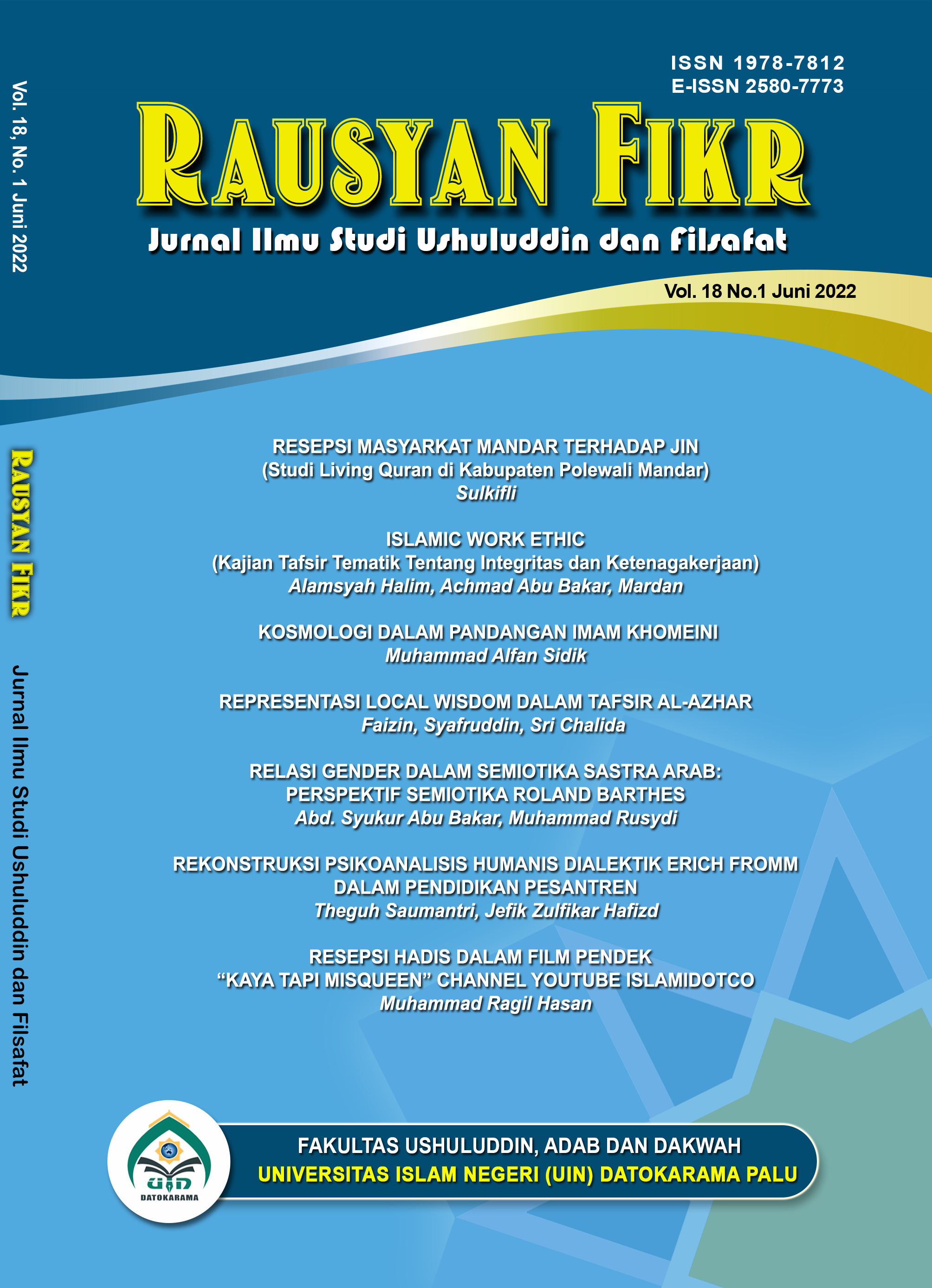RESEPSI HADIS DALAM FILM PENDEK “KAYA TAPI MISSQUEEN” CHANNEL YOUTUBE ISLAMIDOTCO
Abstract
This article discusses the reception of living hadith studies in the film "Kaya Tapi Missqueen" which was uploaded to the Islamidotco youtube channel. This film is a short film with a comedy nuance and tucked into Islamic teachings in the form of the Prophet's hadith. The hadith reads: "The feet of a servant do not shift (towards the Shiratal Mustaqim limit) so that he is asked about his age for what he spends, his knowledge for what he does, his wealth from where he earns and where he spends it, and what he uses his body for." The hadith is because, it is to get how the reception of the living hadith in the film "Kaya Tapi Missqueen" looks like. The author does this by using the reception approach by Ahmad Rafiq who divides it into three reps. Namely, the reception of exageration, reception of esthetics, and reception of functional. The conclusions obtained in this article are 1) the reception of exagesis is formed in the presentation of the hadith as it is without adding a deeper meaning to the hadith; 2) the esthetic reception contained when Pardi (main character) gets a divine state when he dreams of being asked to account for his wealth by an angel in the grave; 3) the functional reception contained in the scene where Pardi is grateful and realizes that his property is only a deposit and will not be held accountable for the answer.
References
Alviana, Arina Nur. “Resepsi Makna Hijab Dalam Film ‘HIJAB’(Analisis Resepsi Mahasiswa Fakultas Agama Islam Universitas Muhammadiyah Surakarta pada Makna Hijab dalam Film ‘Hijab’).” PhD Thesis, Universitas Muhammadiyah Surakarta, 2018.
Dhamayanti, Rahmalia. “POLIGAMI DALAM FILM (ANALISIS RESEPSI AUDIENS TERHADAP ALASAN POLIGAMI DALAM FILM INDONESIA TAHUN 2006-2009).” Komuniti: Jurnal Komunikasi dan Teknologi Informasi 7, no. 1 (2016): 37–44.
Fatimah, Nur. “Membingkai Ajaran Islam Dengan Produk Multimedia ‘Hakikat Kaya’ dalam Film Dokumenter Religi Bukan Seperti Miskin Tidak Seperti Kaya.” Jurnal Ilmu Dakwah 36, no. 2 (2017).
Hayati, Ridha. “Moralitas Pemimpin: Dialektika atas Teks Suci Agama dan Pembentukan Budaya Lokal (Kajian Living Hadits dalam Sinetron Para Pencari Tuhan (PPT) Jilid 2 Eps. 3).” Jurnal Lektur Keagamaan 15, no. 2 (2017): 345–376.
HS, Muh Alwi, dan Amrina Rosyada. “Fenomena Living Islam dalam Sinetron.” MAGHZA: Jurnal Ilmu Alquran dan Tafsir 3, no. 2 (2018): 214–227.
“Islamidotco - Youtube.” Diakses 19 Juni 2020. https://www.youtube.com/channel/UC7brWAoIkRYhR7Bjemr25ZQ.
Masrur, Muhamad. “Kontruksi Harta dalam Perspektif Hukum Ekonomi Syariah (Studi Analisis dalam Alquran dan Hadis).” Jurnal Hukum Islam, 2018, 95–128.
Muhammad Patri Arifin, “Obat Penawar dan Penyakit di Sayap Lalat (Integrasi-Interkonektif Hadis Dengan Ilmu Pengetahuan)”, Al-Munir: Jurnal Studi Ilmu Al-Qur’an dan Tafsir, Vol. 2 No. 2, 2020, 93 – 110.
Nurmansyah, Ihsan. “Resepsi Hadis Tuntunan Sebelum Dan Setelah Pernikahan Dalam Film Papi Dan Kacung Episode 12-13.” Living Islam: Journal of Islamic Discourses 2, no. 2 (24 November 2019): 281–305. https://doi.org/10.14421/lijid.v2i2.2015.
Qudsy, Saifuddin Zuhri, dan Subkhani Kusuma Dewi. Living Hadis “Praktik, Resepsi, Teks dan Transmisi.” Yogyakarta: Ilmu Hadis Press, 2018.
Qudsy, Saifuddin Zuhri, “Living Hadis: Geneologi, Teori, dan Aplikasi,” Jurnal Living Hadis, Vol. 1, No. 1 (April 2016), 177 - 196.
Rafiq, Ahmad, dalam Qudsy dan Dewi, Living Hadis “Praktik, Resepsi, Teks dan Transmisi,” 69–70.
https://islami.co/tentang-islami-co/
Aplikasi Ensiklopedia Hadis-Kitab 9 Imam versi Android
















